TIFF
Type of resources
Topics
Keywords
Contact for the resource
Provided by
Years
Formats
Representation types
Update frequencies
-
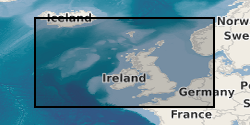
The Marine Photographs Archive held by BGS includes photographs of hydrocarbon well and (non-hydrocarbon) marine boreholes, cores and other samples. There are also photographs of the seabed and survey operations. The photos are primarily for the UKCS (United Kingdom Continental Shelf) and surrounding areas and date from the 1970s onwards. The photographs, which are a mix of prints, negatives and digital are applicable to a wide range of uses including environmental, geotechnical and geological studies. There are also some x-rays of cores.
-
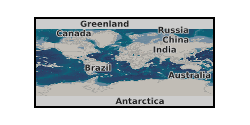
The images in this dataset are a sample of Doddington Sandstone from a micro-computed tomography (micro-CT) scan acquired with a voxel resolution of 4.2µm. This dataset is part of a study on the effects of Voxel Resolution in a study of flow in porous media. A brief overview of this study summarised from Shah et al 2015 follows. A fundamental understanding of flow in porous media at the pore-scale is necessary to be able to upscale average displacement processes from core to reservoir scale. The study of fluid flow in porous media at the pore-scale consists of two key procedures: Imaging reconstruction of three-dimensional (3D) pore space images; and modelling such as with single and two-phase flow simulations with Lattice-Boltzmann (LB) or Pore-Network (PN) Modelling. Here we analyse pore-scale results to predict petrophysical properties such as porosity, single phase permeability and multi-phase properties at different length scales. The fundamental issue is to understand the image resolution dependency of transport properties, in order to up-scale the flow physics from pore to core scale. In this work, we use a high resolution micro-computed tomography (micro-CT) scanner to image and reconstruct three dimensional pore-scale images of five sandstones and five complex carbonates at four different voxel resolutions (4.4µm, 6.2µm, 8.3µm and 10.2µm, scanning the same physical field of view. S.M.Shah, F. Gray, J.P. Crawshaw and E.S. Boek, 2015. Micro-Computed Tomography pore-scale study of flow in porous media: Effect of Voxel Resolution. Advances in Water Resources July 2015 doi:10.1016/j.advwatres.2015.07.012 We gratefully acknowledge permission to publish and funding from the Qatar Carbonates and Carbon Storage Research Centre (QCCSRC), provided jointly by Qatar Petroleum, Shell, and Qatar Science & Technology Park. Qatar Petroleum remain copyright owner.
-
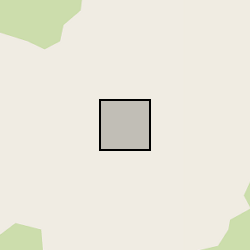
Chemical analysis of pyroxenes and BSE-SEM images from pumices and lava flows from Popocatepetl Volcano, Mexico. Whole rock isotope data from pumices and lava flows from Popocatepetl Volcano, Mexico.
-

A comprehensive core scanning dataset from the Prees-2C borehole. This borehole was drilled onshore in the Cheshire Basin, Shropshire, UK, in November and December 2020 as part of the JET project (Integrated understanding of Early Jurassic Earth system and timescale - https://gtr.ukri.org/projects?ref=NE 2FN018508 2F1) and principally funded by the ICDP, NERC, and DFG. The approximately 620 m-long Early Jurassic core succession (>99% recovery) mainly comprises mudstone, limestone, and siltstone. The core scanning dataset contains optical images, radiographic images, geophysical and geochemical property data obtained using a Geotek rotating X-ray computed tomography core scanner (RXCT), a Geotek multi-sensor core logger (MSCL-S) and a Cox Analytical Systems XRF core scanner (Itrax MC) at the Core Scanning Facility (CSF) at the British Geological Survey (BGS).
-
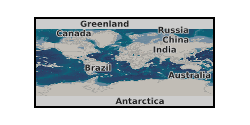
The Marine Reports Archive held by BGS includes published and unpublished reports created by BGS and acquired from various sources. The reports which date from the 1960s onwards include the BGS Marine Reports Series, Marine Commercial reports and associated records, Palaeontology reports and other specialist reports. Examples of report types are data acquisition and processing reports, site investigation reports and interpretation reports. The reports are primarily for the UKCS (United Kingdom Continental Shelf). The coverage of some reports is the entire UKCS whilst other have only regional or very localised extent. The reports are applicable to a wide range of uses including environmental, geotechnical, geophysical and geological studies.
-
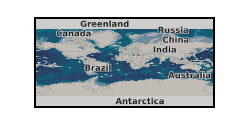
P* data obtained through hydrostatic loading experiments, using triaxial experimental apparatus, as well as yield curve data obtained through differential loading tests, prior to the discovery of P* for different synthetic sandstones. The methodology used was taken from Bedford et al. (2018, 2019). Grain size analysis data obtained using a Beckman Coulter LS 13 320 laser diffraction particle size analyser. Particle analysis was conducted on five different synthetic sandstones with different grain size distributions. Secondary electron and backscatter electron SEM images for natural and synthetic sandstones. Secondary electron images were stitched together to form a whole core image. They were then binarised following the methodology of Rabbani and Ayatollahi. (2015). Hexagon grid size data used to obtain the correct grid size for performing porosity analysis across an mage using Fiji software (Brown, 2000). Bedford, J. D., Faulkner, D. R., Leclère, H., & Wheeler, J. (2018). High-Resolution Mapping of Yield Curve Shape and Evolution for Porous Rock: The Effect of Inelastic Compaction on 476 Porous Bassanite. Journal of Geophysical Research: Solid Earth, 123(2), 1217–1234. Bedford, J. D., Faulkner, D. R., Wheeler, J., & Leclère, H. (2019). High-resolution mapping of yield curve shape and evolution for high porosity sandstone. Journal of Geophysical Research: Solid Earth. Brown, G. O., Hsieh, H. T., & Lucero, D. A. (2000). Evaluation of laboratory dolomite core sample size using representative elementary volume concepts. Water Resources Research, 36(5), 484 1199–1207. Rabbani, A., & Ayatollahi, S. (2015). Comparing three image processing algorithms to estimate the grain-size distribution of porous rocks from binary 2D images and sensitivity analysis of the grain overlapping degree. Special Topics & Reviews in Porous Media: An International Journal, 6(1).
-
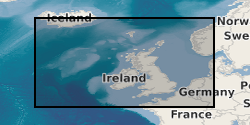
The Marine Maps and Chart Archive held by BGS contains maps created by BGS (the majority of which result from BGS offshore mapping projects) and also maps acquired from various other sources (e.g. UK Hydrographic Office and MCA Civil Hydrography Programme survey charts). The maps which date from the 1960s onwards are very variable in subject type and scale ranging from survey navigation to geological interpretation. The maps are primarily for the UKCS (United Kingdom Continental Shelf). The coverage of some map types is the entire UKCS whilst other have only regional or localised extent. The maps which are a mix of paper and digital are applicable to a wide range of uses including environmental, geotechnical, geophysical and geological studies. range of uses including environmental, geotechnical, geophysical and geological studies. Scanned maps can be viewed via the BGS maps portal http://www.bgs.ac.uk/data/maps.
 BGS Data Catalogue
BGS Data Catalogue